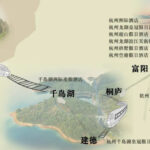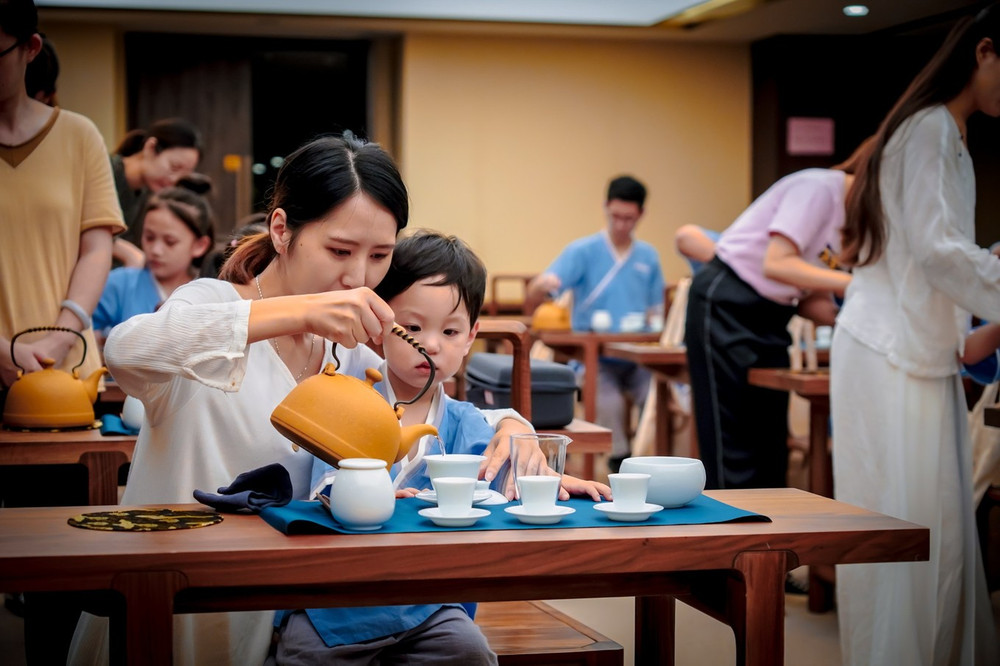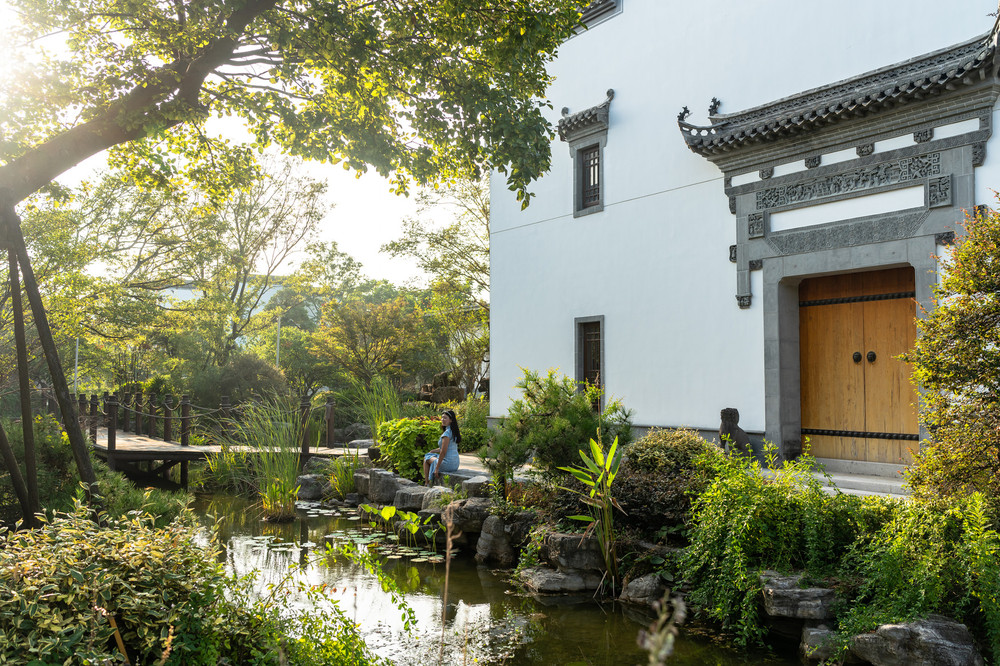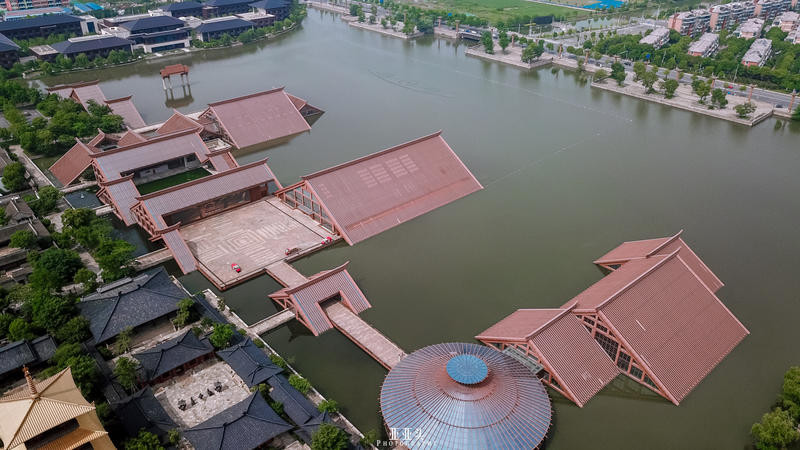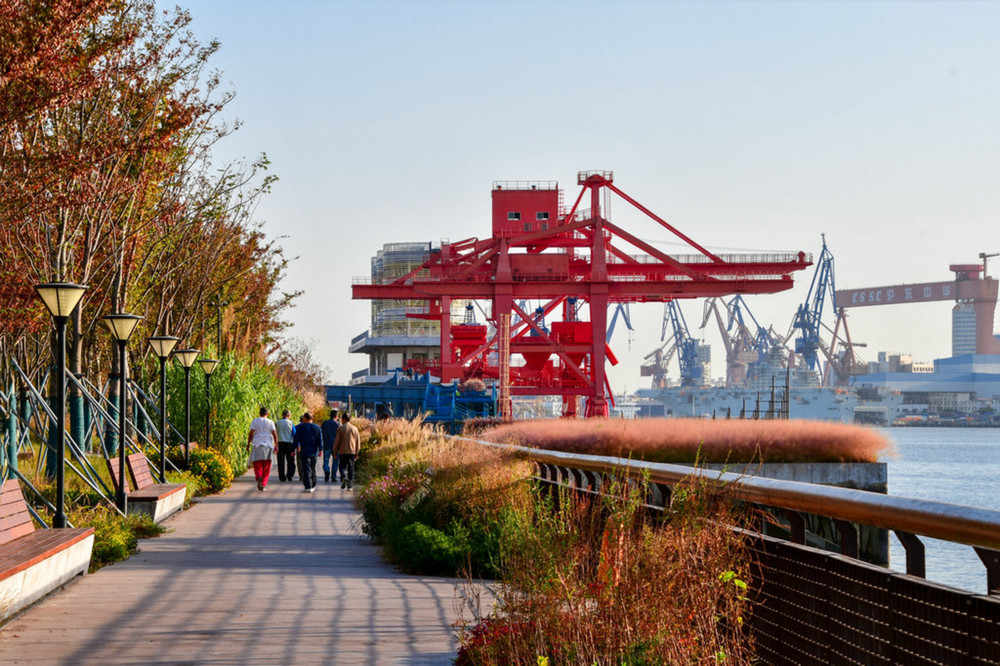Duration: 1 Day
The author visited these places: Shanghai Ancient Yiyuan Garden, Liuyun Zen Temple, Shanghai Botanical Garden.
Published on 2020-07-31 22:38
July is my birth month. Traditionally, the time I would escape Shanghai. But this year, due to certain special circumstances, I do not have much enthusiasm for distant travels. However, the sense of ritual I have maintained for over a decade cannot be broken. Summer is also a good season for appreciating lotus flowers. So I decided to take a one-day trip nearby, either Hangzhou West Lake or Ancient Yiyuan Garden. Although I have visited these places many times, each visit still yields different experiences.
The day before my birthday, I checked the transportation and found that going to Ancient Yiyuan Garden is very convenient. There is a direct bus ride that is more convenient and time-saving than the subway, taking only half an hour. Back in the day, a friend bought an apartment next to Nanxiang subway station before the new policy (single people from other places were not allowed to buy houses). And strongly encouraged me to buy there as well. At that time, the price of a new elevator apartment of over 90 square meters next to the subway was similar to that of a 60 square meter old house in Hongqiao Town built in 1996. And I chose to live in a small space! Just like the concept of Shanghai people in the mid-to-late 1980s. They would rather have a bed in Puxi than a whole apartment in Pudong.
As the high-speed road passed by, the view outside the window was of Nanxiang, an ancient name for Cha Xi. When Emperor Wu of Liang founded the country, Nanxiang was just a desolate village. One day, local farmers found a large stone over ten feet long while plowing. As soon as the stone was exposed, a pair of red-crowned cranes circled above and landed on it to rest. A monk named Deqi believed this place was a Buddhist site and decided to build a Buddhist temple here. Strangely enough, every day the white cranes flew in a certain direction. People from that direction would come to donate money. And this happened every day without fail. Soon, a large sum of money was raised, and construction of the temple began. In 505 AD (the fourth year of the Tianjian era of the Liang Dynasty), the White Crane Nanxiang Temple was completed. And the town was named Nanxiang because of the temple.
Nanxiang Town is one of the four famous historical towns in Shanghai. Historically known as ‘Little Nanxiang Competes with Suzhou City’, with a long history, rich culture, numerous cultural relics. And famous attractions such as the brick tower, Ancient Yiyuan Garden, Tan Garden, and Liuyun Zen Temple.
Ancient Yiyuan Garden was first built during the Jiajing period of the Ming Dynasty. Originally named ‘Yi Garden’, taken from the phrase ‘green bamboo Yi Yi’ in the Book of Songs. In the eleventh year of the Qianlong Emperor of the Qing Dynasty (1746), it was renamed ‘Ancient Yiyuan Garden’. And it is one of the five major classical gardens in Shanghai. It is famous for its five major features: green bamboo Yi Yi, quiet and winding waters, elegant architecture, couplet poetry, and flower and stone paths. The garden includes four major scenic areas: Yi Garden, Flower Fragrance Fairy Garden, Winding Stream Crane Shadow, and secluded bamboo smoke moon. It also contains famous attractions such as the Yi Ye Hall, Goose Playing Pond, Qingqing Garden, and Nanxiang Wall.
The Jiangnan water town: charming and graceful, fresh and beautiful white walls and black tiles, small bridges and flowing water. Creating a natural and unrestrained dry stream scene with pebbles and flowers.
In the hazy mist, lotuses are in full bloom, presenting a Jiangnan painting scroll of ‘thousands of peaks embracing greenery and a stream of mist, with clear waves rippling and playing with stone lotuses.’ (Set in Shanghai Botanical Garden). Because the park ticket is quite cheap at 12 yuan. In addition, getting an annual pass is also very convenient and inexpensive. It is also a good place for local residents to gather and exercise.
Wan’an Pagoda: Originally located in Wan’an Temple in the southwest of Nanxiang Town. In 1988, only three sections of the pagoda body remained. After restoration, it was moved to Guyi Garden.
The Qingqing Garden scenic area was built in 1985 and is the largest scenic area in the park. It is mainly composed of lush green bamboos, reflecting the characteristic of ‘lush green bamboos’ of the ancient Guyi Garden.Liuyun Buddhist Temple was built in the fourth year of Tianjian in the Liang Dynasty (505 AD). It was originally named ‘Baihe Nanxiang Temple’. According to legend, during the Tianjian years of the Liang Dynasty in the Southern Dynasties (502 – 519), a farmer unearthed a stone. There were often two cranes flying and standing on the stone. Some people raised funds to build a temple. After the temple was completed, the cranes flew south and never returned, hence the name Nanxiang Temple. The town is also named after this. During the Shaoding years of the Song Dynasty, because Emperor Lizong Zhao Yun bestowed the plaque of ‘Nanxiang Temple’, the temple name became Nanxiang Temple. In 1700 AD, Emperor Kangxi bestowed the plaque ‘Yunxiang Temple’, so it was renamed Yunxiang Temple. Guanyin Hall and the bell tower and drum tower on both sides. The Mahavira Hall and the Manjusri Bodhisattva Hall and Samantabhadra Bodhisattva Hall on both sides.
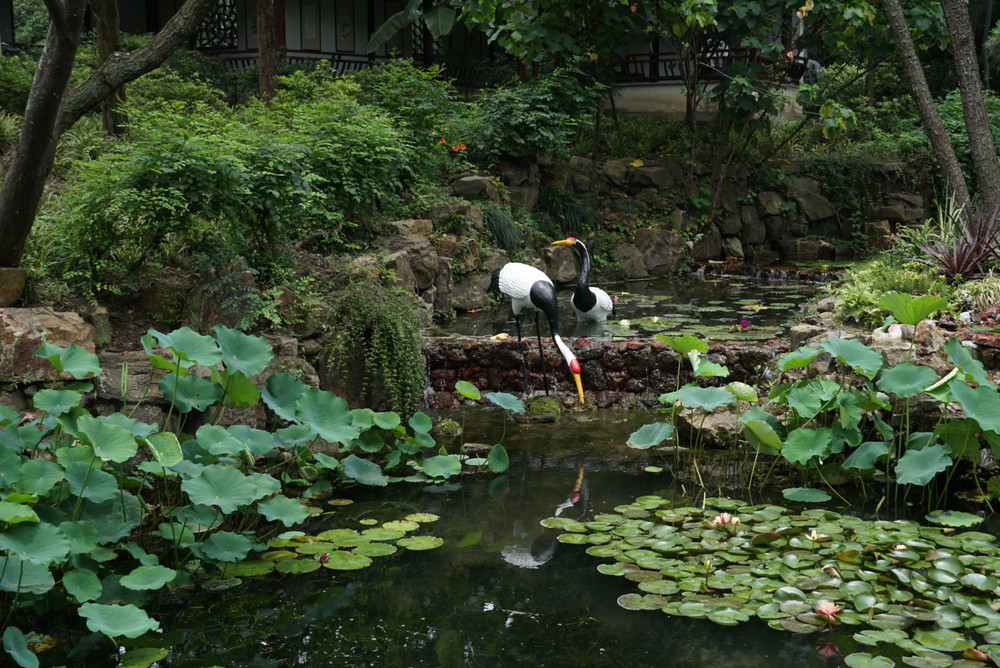
Built in the Five Dynasties to the early Northern Song Dynasty, they were originally built on both sides inside the mountain gate of Baihe Nanxiang Temple. The twin pagodas are the only pair of the oldest imitation wooden-structure pavilion-style brick pagodas remaining in the country.
Roaming Beyond the Mundane World: A very charming coffee shop with two floors. Downstairs near the street is a cultural and creative store. Inside is a public welfare library ‘My Jia Study Room’. You can enter with the library card shown in the picture above. Regrettably, it was not open that day. Reservations will start after the 26th. Upstairs is a coffee shop where you can view the scenery of Tanyuan Garden. The place on the second floor for taking a break, having tea and coffee, and gathering. A corner of Tanyuan Garden outside the window.
Handmade pottery: Kunqu Opera. In a corner on the second floor, there are classical Kunqu Opera beauties with porcelain. The walls are covered with paintings of ‘Romance of the Western Chamber’. I super like it! A very artistic tree and shadow. The business of taking ancient costume photos is particularly good. Sachet store. For dinner, stinky tofu. When it was about to rain, I arrived at the station. There was already a thunderstorm when I was on the bus. A perfect day of self-indulgence! My lunch: a bowl of cold noodles. I always feel that my memory is like that of a fish. I feel very busy every day, but I don’t know what I have done. Therefore, only by recording can I have some retrospection.
Today marks the last day of July, and with the travelogue I planned to write still unfinished, I take this opportunity on the final day of the month to reminisce about the experiences, thoughts, and feelings from my birthday that day! A bowl of liangpi, a cup of coffee, and a few pieces of stinky tofu made for a memorable day, simple yet satisfying! Chasing Stars, by Theresa Heine (UK): ‘I want to hunt with Orion under the dark night sky, we shall ride on Pegasus to catch a wisp of golden sunlight. I’ll use my moon lasso to capture Saturn’s bright rings and label all its moons with the mark of storms. I want to bake a batch of gingerbread men on Venus’ scorching hot soil and stir its volcanoes to watch the bubbling magma. I will catch the blue Uranus and teach it how to fly, throwing it like a frisbee to cut a streak of light across the night sky.’ From ‘Poems for You’, July 19, 2020, ‘The Star Chaser’. Take advantage of the cool summer nights to watch the stars; when they twinkle, your heart will surely tremble too. But if you can’t wait for the stars above, protect the star within and always be a star chaser! The memories of childhood summer days come to mind, lying on a bamboo bed under the stars counting them, with the sound of frogs and the flickering of fireflies…




